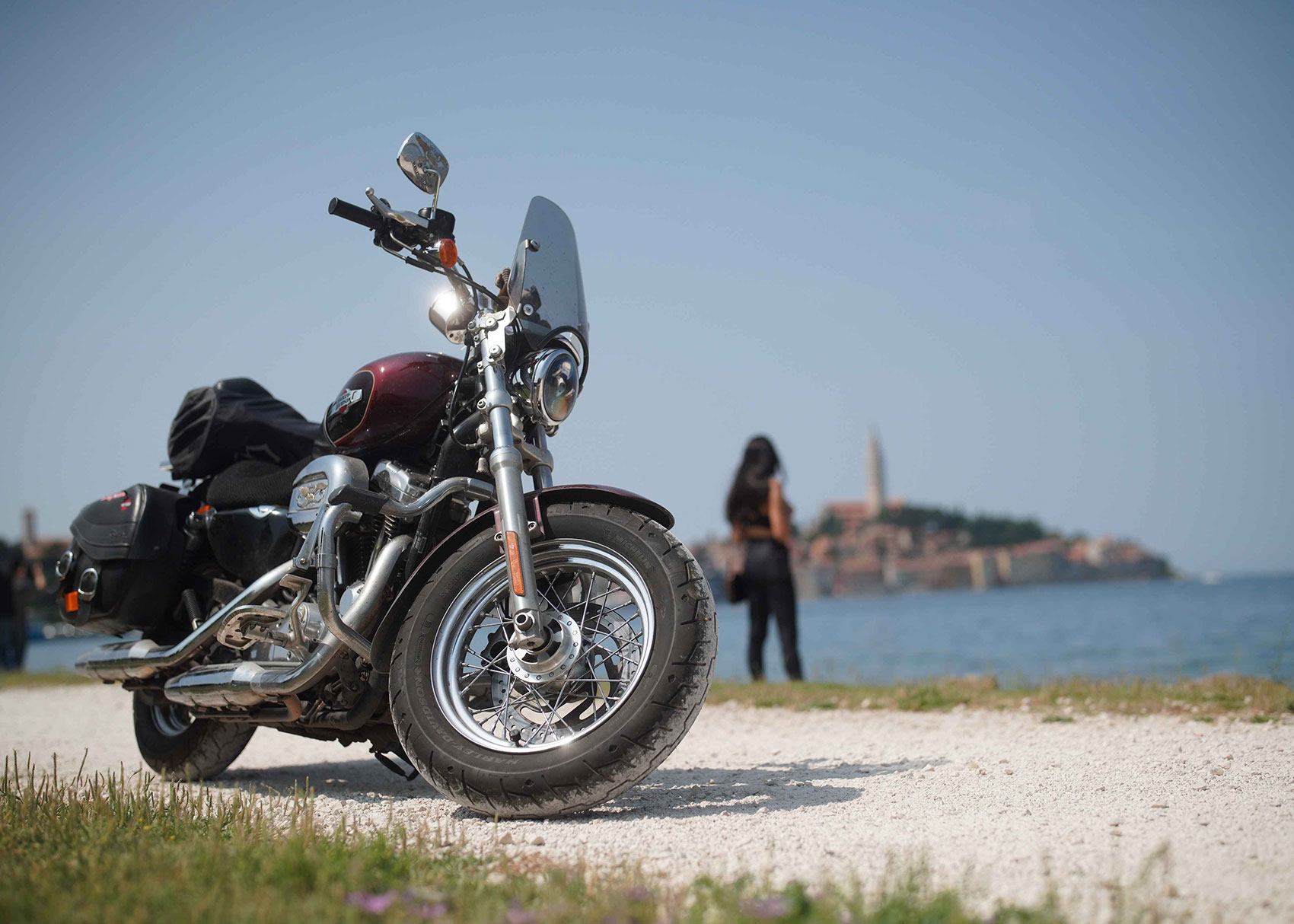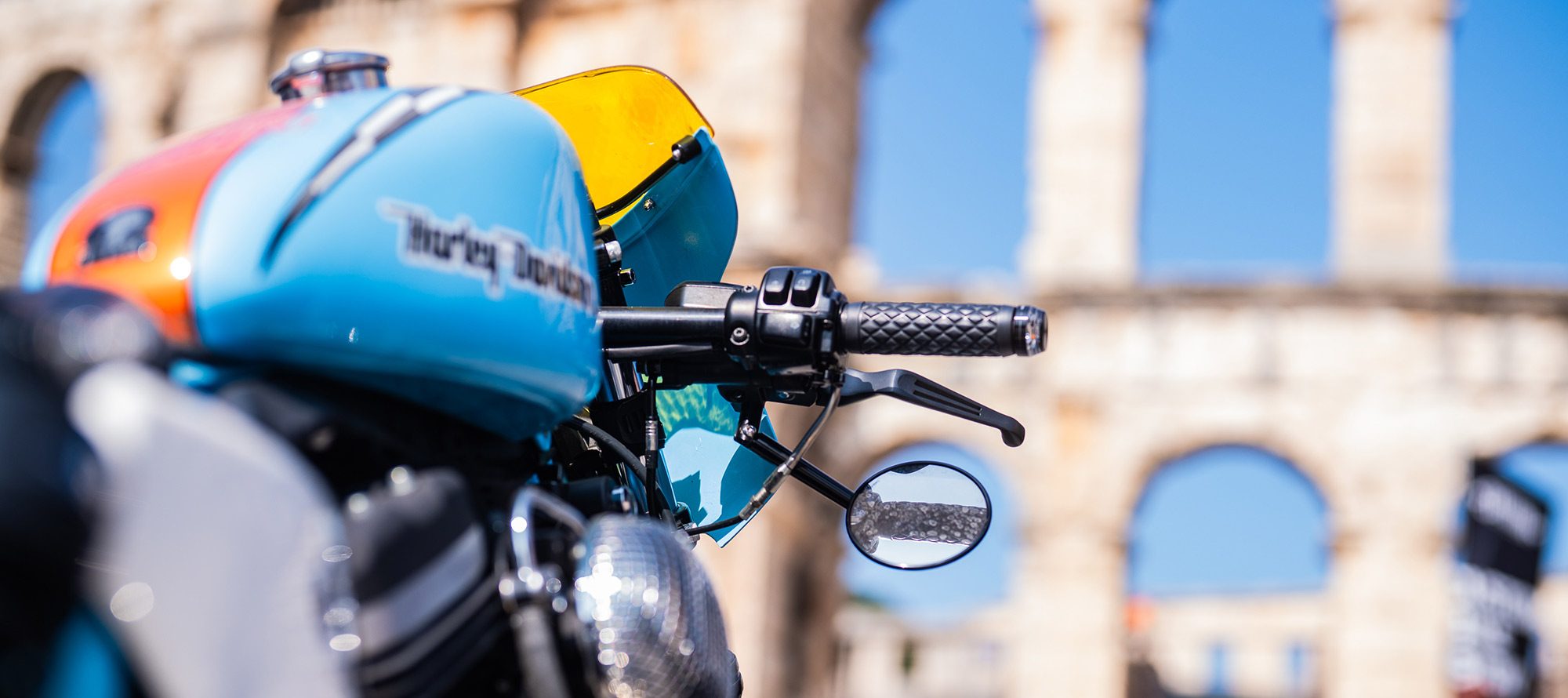
KEEP IT UPRIGHT
Two small contact patches of rubber between you and the road are all that are keeping you upright and pointed in the direction you desire. Take care of your tyres with these tips
WORDS BY RAY PETRY
Tyre pressures should be checked regularly but exactly how often is ‘regularly’? That depends. If you ride every day, then it might be once a week; for riding on weekends, check before that first ride of the weekend; if you’re going on a big trip, then before you depart. Check tyres ‘cold’ – that is, before you ride or even have your motorcycle out in the sun. Always use the pressures listed in your owner’s manual, not those listed as maximum pressures on the sidewall of the tyre. Get to know what your tyres look like when they’re properly inflated and look at your tyres every time you approach your bike to mount it. If you notice something odd, like there’s less space between the rim and the ground, or the tyre has a larger contact patch than you’re used to seeing, it warrants a closer look and an additional pressure check. The tyre might have suffered a puncture or a cut on the ride leading up to this stop. It’s better to find out what’s up before venturing further.
There’s more to maintaining healthy tyres than keeping up with the pressures. Check the condition of your tyres periodically, too. Are there cracks appearing in the sidewalls? Anything stuck in the tread? Fractures in the tread? Worn tread? Worn tread can be checked by looking for tread wear indicators, which are small bridges in the grooves of the tyre. Many manufacturers include markings on the sidewall pointing to the tread wear indicators. Follow these marks across the tread and look for the indicators deep in the tread. Do this across the tyre and also around the circumference. When the tread wears to the point where the tread wear indicator is flush with the surface of the tread, it’s time for a new tyre. This is where you need to consider your riding habits. If you’re a weekend or a commuter rider, you can plan for just the right time to be without your bike for a tyre change. However, if a big cross-country ride is in your future, you might consider new tyres before the beginning of the trip. Even if the tread isn’t at the tread wear indicator, it might reach there halfway through your trip. Do you have a planned stop that will allow for a tyre change? Is there a dealership nearby? Will it have your tyre size in stock and the time to fit you into the schedule? Sometimes it’s better to change a tyre earlier than necessary to avoid downtime on an epic ride.
While you’re looking at tyre tread condition, be on the lookout for cupping. Cupping is uneven wear on the tread surface, which can be caused by a variety of things, including improper loads, improper tyre pressures or steering head bearings that are out of spec. Cupping can be identified by wiping your open hand across the tread face parallel and perpendicular to the tyre. Except for the tread edges, the tyre will feel smooth if it’s free of cupping; if you feel undulations and inconsistencies, you have a cupped tyre, and need to remedy the cause and replace the tyre.
There’s more to maintaining healthy tyres than keeping up with the pressures
Next, check for cuts and splits in the tread face. Harsh surfaces, potholes, broken edges and debris can damage tyre treads and even the carcass of the tyre, and road hazards aren’t always something you can swerve around to avoid. As you’re looking over your tyres, check carefully for these types of damage. While most are just nuisance-type wear, some can be more serious and require replacement of the tyre. When in doubt, ask your service team about what you discovered.
Tyre age is another important consideration, so it’s crucial to know how to determine the age of your tyres. At its simplest, a look at the sidewalls of your tyres will show if they’re cracked and checked; if so, this is an indication of aging as the rubber is beginning to break down. Like bread, tyres age, and the newer they are when you mount them the better. Tyre manufacturers generally cite five years as the recommended time to replace them. If you’re a high-mileage rider, then the need to change tyres once or more a year means this is something you might not worry about. But for riders who only clock a few thousand miles a year, take note: getting five years out of a set of tyres might put you in the replacement zone before the tread indicates the need for a tyre change. Old date codes are typically accompanied by fine cracks appearing in the sidewalls. The rubber compound changes too – it gets a bit of a hard shell on it from exposure to air and sunlight, which means less traction, and reduced braking and cornering performance available from that tyre compared to a newer version of the exact same tyre. Dig a fingernail into the tread face; does it bite in, or is the rubber hardened? Hardened rubber indicates time for new tyres even though there may be plenty of tread left. How can you ensure the freshest rubber? Buying tyres from a busy dealership usually minimises risk; they turn their tyre stock rapidly, which means fresh tyres for you. If you have any concerns about this, ask when you drop your bike off – better to find out before the tyres are mounted than once your bike is out front sitting on them.
Plugging tyres is a controversial subject, but the truth is do you want your life, and your motorcycle, depending on a plugged tyre? Tyre manufacturers generally discourage tyre plugging, with some exceptions. The exceptions are usually defined by the size of the puncture, and where it is in relation to the tread and the sidewall. All exceptions aside, most repair shops err on the side of ‘don’t do it!’ In practice, tyre plugs are okay for remote situations where you only need to get off the highway and to a dealership for a new tyre. Plugging a tyre requires a plug kit, an air compressor and some muscle. It might be less of a hassle to call for help and get off the road instead of crawling under your bike on the roadside to drive in a plug and get it aired up! When considering whether to pack a plug kit, know your wheels first. Wire wheels often include tubes and aren’t repairable with a plug, while cast wheels are tubeless and will accept a plug repair. Regardless, consider a plug repair as a crutch to get to help by riding at low speed directly to the dealership for a tyre replacement.
Sometimes it’s better to change a tyre earlier than necessary to avoid downtime on an epic ride
When it comes time to buy new tyres, good discussion points at the service counter are load ratings, speed ratings and compounds. Trust your dealer to only offer you tyres that are rated for your motorcycle’s maximum loads and speeds. These two ratings are coded on the tyre sidewall but more importantly are specified by the motorcycle manufacturer. Compounds – the mix of rubber and additives in the moulding process – will determine how a tyre behaves and wears. Like many things in life, this is an area where you can’t have it all. Tyres that grip well typically wear faster and vice versa. Do ask your dealer about tyres that suit your needs for long wear, great traction or wet weather performance.
After you’ve gotten new tyres, take it easy at first. New tyres aren’t ‘scrubbed in’; they have a smooth finish from the mould that doesn’t offer the most grip. They also may still have some release agent on them that makes them easy to remove from the mould but makes them not so grippy on the road. Finally, even the most carefully installed tyre might need to settle onto the rim; in other words, a tyre might have a section that hasn’t fully seated. All this means is you need to take it easy – your bike might not corner or stop as expected until you break in the tread surface by riding it on the street. Lean the bike left and right at slow speeds to get the full tread face scrubbed in; as you ride, any adjustments between the tyre and the rim will naturally settle themselves out, too.
Direction of rotation is very important on motorcycle tyres. The belts are laid in the mould and overlapped specifically for front or rear, and for direction of rotation. Tyre manufacturers include rotation indicators on the sidewall to aid technicians when mounting tyres. If you ever notice the arrow pointing the wrong way, get that remedied right away.
Car tyres on a motorcycle might look edgy but aren’t a smart idea. There are even websites that advocate for car tyres on a motorcycle, but then again there are also websites that insist the earth is flat. The truth is, motorcycle tyres are engineered for motorcycles, car tyres aren’t engineered to operate leaned over and the earth isn’t flat, so leave car tyres for the ‘cages’.
Finally, unlike four-wheeled vehicles, spraying tyre protectants on the sidewalls of motorcycle tyres is discouraged. Tyre dressings are typically quite slippery, so you don’t want that on your contact patch or on your brakes. If you insist on adding a tyre dressing, spray it on using an applicator and then apply it with care to the sidewall only.
With a little thought and periodic checks, you can enjoy the ride knowing your tyres are as good as they can be. So take care of your tyres, and they will take care of you.
Ray Petry is a Certified Riding Academy Coach and a member of the Riding Academy™ team at Harley-Davidson Motor Company, headquartered in Milwaukee.
Tags:
Read more tales from the Harley Owners Group!
Croatian Sunshine
The 31st European H.O.G. Rally returned to celebrate under blue skies in Medulin from 12-15 June 2025
In the pink
Creative imaginations were let loose on a spectrum of Harley models, with the top entries showcased along the marina


